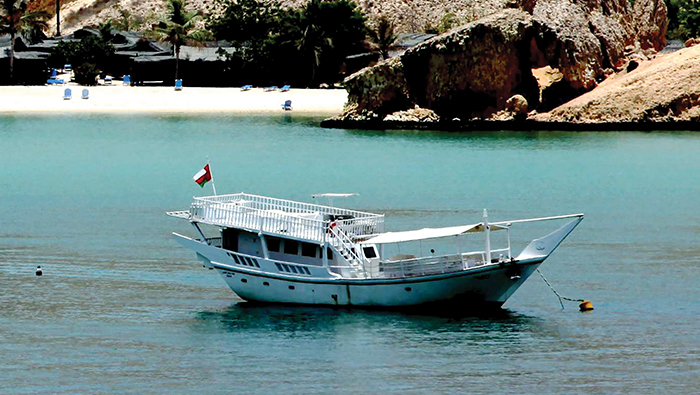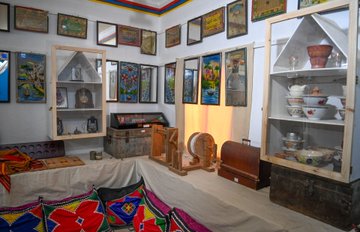

Muscat: The Museum of Generations Continuity in the Wilayat of Taqah is the first private museum licensed by the Ministry of Heritage and Tourism in the Dhofar Governorate.
The museum is located in the old neighborhood near Taqah Ca and Al Askar Tower. It was inaugurated in February 2023, and it includes an "external square" in addition to four main halls: the "reception" hall, the "Umm Salem" hall, the Great Hall, and the "Deirhom" hall for coins.
Salim bin Ahmed Al Omari, the owner of the private museum, said that he began collecting various archaeological holdings in 1983, explaining that the museum promotes the preservation of authentic Omani heritage and implants it in the hearts of young people.
Al Omari indicated that the museum’s outer yard contains a wall of palm fronds with the cultivation of some local trees, models of windows and doors of old design, the Ghanja ship, and some types of fishing nets and stones used in construction in the past.
He explained that the "reception" hall in the museum embodies the Bedouin environment, with its tent woven from animal wool, handicrafts, palm fronds, some cooking tools, Bedouin clothing and musical instruments such as the dargham and the rebab, as well as a miniature cultural library, in addition to some ancient fossil holdings.
Al Omari explained that the "Umm Salem" hall is for the late craftswoman, Taful bint Ramadan, which includes antique collections and tools that represent the urban environment and what the bedroom contains, and ancient decorative and cooking tools. This is in addition to wooden chests and handicrafts related to the urban environment, such as the palmette craft called "Al Qaff''.
The owner of the private museum also pointed out that the Great Hall includes two sections: a section for men's and women's adornment in Dhofar, and the section for the rural environment. He indicated that the section for traditional costumes represents urban, rural and Bedouin environments, in addition to used adornments, Omani daggers, silver industries and incense.
Al Omari pointed out that the section of the rural environment in the Great Hall embodies a rural house consisting of wood, straw, ropes, kitchen utensils, rural clothing for men and women such as dyeing, Nile dress, leather industry, pottery, palm fronds, tools for extracting municipal ghee, which is locally called “Qatamim”, and a “cradle” bed for the child.
He added, “The hall of their monastery in the local dialect, meaning money, contains multiple models of banknotes, coins, and commemorative coins circulated in the past in the Sultanate of Oman, in addition to highlighting pictures of the Sultans of Oman and some models such as castles, forts, towers, and ships.”
Al Omari added that work is underway to develop the museum by adding a new hall dealing with old traditional crafts in Dhofar, used in trade, carpentry, construction and agriculture.